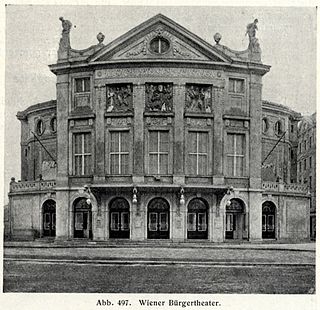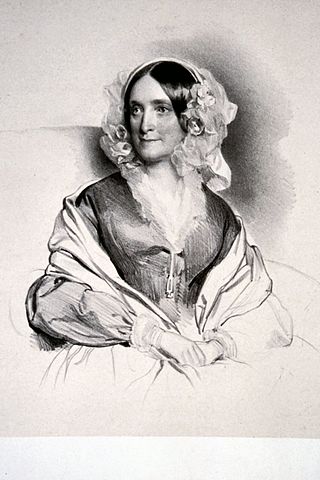Related Research Articles

The Austrian nobility is a status group that was officially abolished in 1919 after the fall of Austria-Hungary. Austria's system of nobility was very similar to that of Germany, as both countries were previously part of the Holy Roman Empire (962–1806).

Hotel Metropole was a hotel in Vienna, Austria that was constructed in 1871–73. It was destroyed during World War II after serving as the Vienna headquarters of the Gestapo from 1938. The address was Morzinplatz, in the 1st District Innere Stadt.

Palais Rothschild refers to a number of palaces in Vienna, Austria, which were owned by members of the Austrian branch of the Rothschild banking family. Apart from their sheer size and elegance, they were famous for the huge collections of valuable paintings, statues, furniture, books and armour that they housed, another reflection of the family's vast wealth and prominent position.

The Palais Toskana was a palace in Vienna.

The Palais Lanckoroński was a palace in Vienna, Austria, located at Jacquingasse 16-18, in the Landstraße District. It was constructed in 1894-95 for Count Karol Lanckoroński and his family as a personal residence, and it housed the count's enormous art collection. The palace was built in a neo-baroque style by the theatre architects Ferdinand Fellner and Hermann Helmer. The building was three stories high, set back from the street, and protected by a wall with double gates. The entrance hall was wood panelled, two stories high, and decorated with portraits of the family. Other festive halls were decorated with frescoes and luxurious gobelin tapestries from the 17th century. Precious paintings, furniture and sculpture from different eras were arranged to form themed ensembles in the various rooms, with the rooms named to reflect the collection housed within. The palace was severely damaged in World War II, and was torn down in the 1960s.

Czartoryski-Schlössel was a palace called Weinhaus in the Währing district of Vienna, Austria. It was built in 1807 for the banker Friedrich Jakob van der Nüll, the legal, but not biological father of architect Eduard van der Nüll. The palace was subsequently put up for sale and purchased by Prince Czartoryski; it remained in possession of the Czartoryski family until shortly after World War I.

Schloß Pötzleinsdorf or Schloss Pötzleinsdorf is a former palace in Pötzleinsdorf, Vienna. It is currently being used as a primary school.
Palais Erdődy, also called the Palais Esterházy, was a palace in Vienna, Austria. It was commissioned by Nikolaus II, Prince Esterházy in 1802 to be designed and built by Karl von Moreau.

Neudeggergasse Synagogue was a Jewish synagogue, located at Neudeggergasse 10–12, Josefstadt, in the 8th district of Vienna, Austria. The synagogue served the Jewish community of Neubau and Josefstadt, the 7th and 8th districts of Vienna.

Baroness Franziska "Fanny" von Arnstein, born Vögele Itzig, was a Viennese socialite and salonnière and a supporter of both Mozart and Beethoven.

The Carltheater was a theatre in Vienna. It was in the suburbs in Leopoldstadt at Praterstraße 31.

The Bürgertheater was a theatre in Vienna.

The Palais Albert Rothschild was a palatial residence in Vienna, Austria. It was one of five Palais Rothschild in the city that were owned by members of the Rothschild banking family of Austria, a branch of the international Rothschild family. It was located at Heugasse 26, in the 4th (Wieden) district of Vienna. Commissioned by Baron Albert von Rothschild, it was designed and built by the French architect Gabriel-Hippolyte Destailleur between 1876 and 1884, and demolished in 1954.

The Palais Nathaniel Rothschild was a palatial residence in Vienna, Austria. It was one of five Palais Rothschild in the city that were owned by members of the Rothschild banking family of Austria.

Hilde Spiel was an Austrian writer and journalist who received numerous awards and honours.

Henriette von Pereira-Arnstein was an Austrian pianist and salon-holder.

The Rothberger department store, formerly at Stephansplatz 9 and 11, was a large textile department store in Vienna's city center before 1938.

Villa Regenstreif was a villa in Währing, the 18th district of Vienna, Austria, commissioned by Fritz Regenstreif and built by Friedrich Ohmann. The property bordered Pötzleinsdorfer Strasse 36-38 to the south and Starkfriedgasse 15 to the north.

The Johann Strauss Theater in Wieden, part of Vienna, Austria, was built in 1908 especially for operettas. It had a hall for 1,200 spectators in Baroque Revival style. After many successful world premieres such as Die Csárdásfürstin, played more than 500 times, it was demolished in 1960.

Cäcilie von Eskeles was a prominent German Jewish noblewoman, salonnière, music collector and harpsichordist in early 19th century Vienna. She was a friend of Goethe and of Beethoven.
References
- ↑ pg. 103, Dieter Klein, Martin Kupf, Robert Schediwy (Ed.) Stadtbildverluste Wien - Ein Rückblick auf fünf Jahrzehnte. LIT Verlag, Vienna 2005. ISBN 3-8258-7754-X
- ↑ pg. 103, Dieter Klein, Martin Kupf, Robert Schediwy (Ed.) Stadtbildverluste Wien - Ein Rückblick auf fünf Jahrzehnte. LIT Verlag, Vienna 2005.